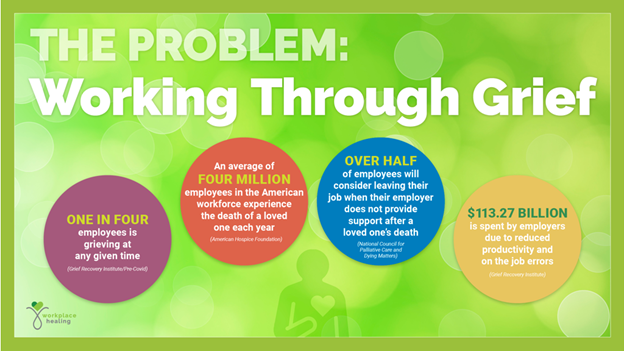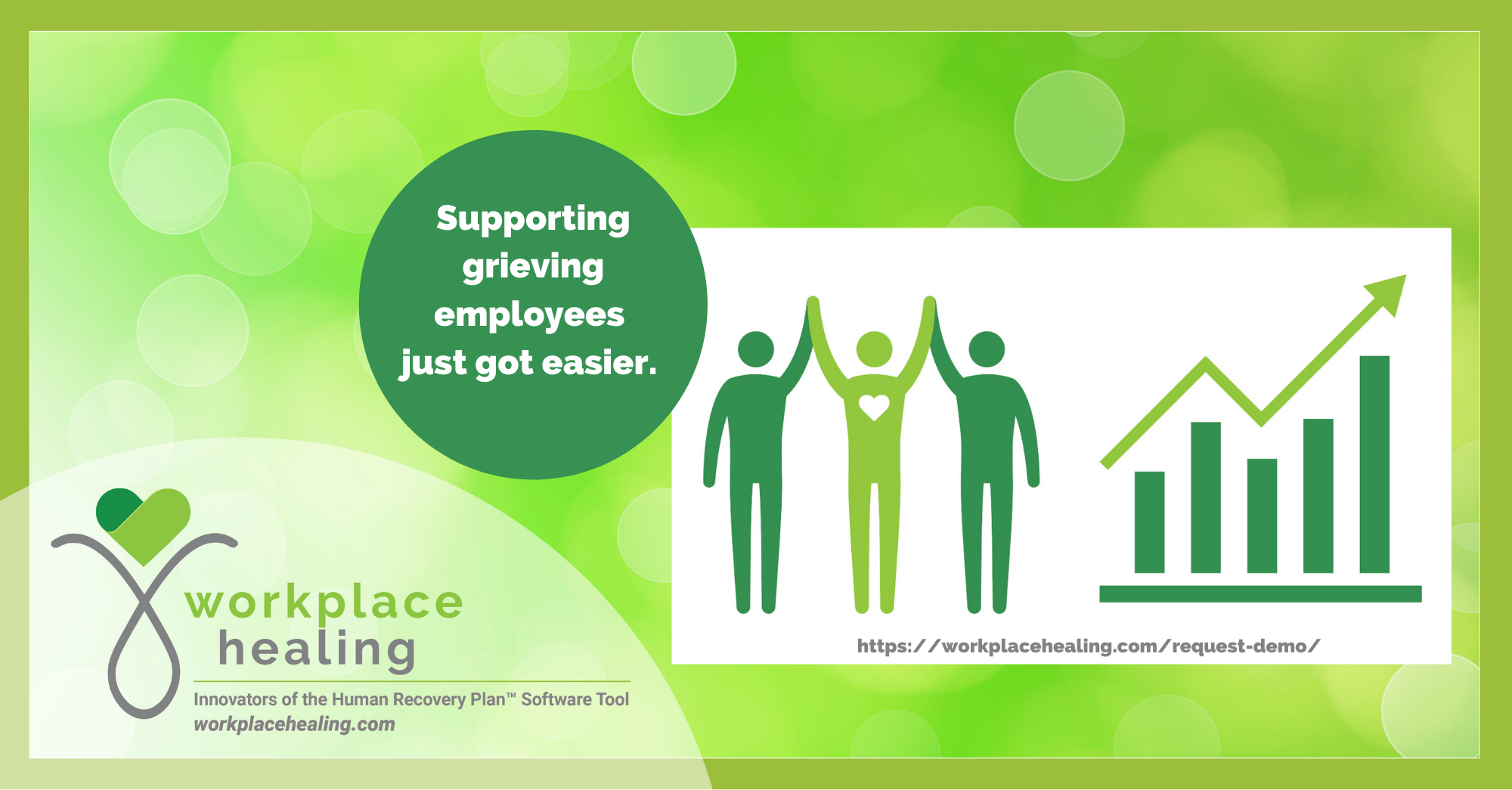
Balancing Act: The Strategy Successful Leaders Rely on to Navigate Employee Grief
Have heart — you can support a bereaved employee while also reaching your company’s business objectives and preserving employee engagement and morale through leadership skills and empathy training.
From bereavement to caregiving challenges, employees lead multidimensional lives fraught with personal heartaches and life disruptions. Inevitably these pivotal and often excruciating life events seep into the workplace affecting focus, job performance and productivity.
Effectively leading through complex and often emotional personnel issues can help you foster a more purposeful, engaged team environment. The looming question keeping leaders up all night is…how?

You aren’t alone. Through research and ongoing engagement with executives, we’ve heard from hundreds of CEOs and other corporate leaders. Many struggle with how to support an employee navigating a life disruption without appearing awkward or insensitive. For example:
“After my VP’s husband died, she wasn’t herself at work, so I took her out to lunch. I was hesitant to bring up her husband’s death which could have elicited tears. Clearly I didn’t, and our team didn’t respond well enough, because she left our company.”
“I told my employee to take as much time as he needs after his mother died. Projects are piling up and my team is maxed out. When is it appropriate for me to talk to him about coming back to work without appearing insensitive?”
“One of my employees is so stressed trying to work and care for her ailing mother, everyone is walking on eggshells around her. I referred her to our company EAP for counseling, but I don’t know how else to manage this situation.”

A clear leadership strategy helps you avoid staying in crisis mode.
At some point, every leader is confronted with a grieving employee. According to the Grief Recovery Institute (pre-COVID), one in four employees is grieving at any given time. Grief doesn’t only include the death of a loved one, but also other major life disruptions like divorce, chronic illness, caregiving and job loss.
When we’re in the midst of wondering how to support an employee in crisis, the stress and uncertainty can cause rash decision-making or judgment errors—or worse, simply shutting down and hoping the issue will go away on its own.
Planning and training for inevitable employee life disruptions isn’t just a wise leadership strategy, it means you and your team can navigate a variety of situations with calm, thoughtful confidence and empathy.
Balancing the head and the heart is effective.
You don’t have to be a grief expert to effectively support a bereaved employee. But you can be part of their healing strategy by following a measured balance of head and heart-based tactics. Why does this balance matter?
The head helps you logically assess the situation and problem-solve based on the best information you have available.
The heart ensures you don’t lose your humanity in the process.
What does a head-based tactic look like?
A head-based tactic is practical and informative, helping a leader re-integrate a bereaved employee by connecting them with available company benefits and recommended resources.
For example:
- Employee assistance plan benefits.
- Financial counseling due to sudden change in income.
- Mental health resources.
A head-based initiative also helps a supervisor manage their team’s workflow by tactfully determining how and when to talk to their bereaved employee about their current work capacity.
 What does a heart-based tactic look like?
What does a heart-based tactic look like?
A heart-based tactic provides empathetic support that affects the emotional well-being of your employee.
Empathy might feel a little uncomfortable and touchy-feely to an executive accustomed to making decisions strictly based on policy, data and research. But behind every strategy, vision and mission is a human-centered workforce filled with individuals dealing with daily struggles and challenges at home and at work. When an employee feels like they matter, they are more likely to stay with their company.
Empathy is a learned skill that can help you build a more engaged, high-performing workplace. Examples of heart-based tactics include:
- Coordinating meal delivery.
- Setting aside time to listen to your employee share memories or stories about their loved one.
- Words and actions that acknowledge holidays and anniversaries that will likely be difficult for your employee.
What happens when you rely too much on the head?
With data-driven actions and words devoid of empathy, you risk alienating your employee and instigating a drop in trust, loyalty and morale across your team. This can impact workplace culture and lead to spikes in turnover, disengagement, presenteeism and absenteeism.
What happens when you rely too much on the heart?
Effective leaders make decisions based on what’s best for the entire team. While empathy is an essential leadership skill, over-identifying with an employee’s pain can lead to managerial stress and burnout, poor or short-sighted decisions that negatively affect your team, and plummeting rates of productivity and job performance.
By creating a plan that balances both the head and the heart, leaders demonstrate that they care about their employee while also working within the guidelines of corporate policy and team objectives.
Equipped to respond quickly and effectively.
With the right tools, resources, and strategies, you’ll have a reliable path to follow and a coordinated plan of action you can trust.
Cohen-Esrey Development Group had only recently adopted the Human Recovery Platform™ weeks before their team suffered the unexpected death of a beloved coworker.
Guided by the Human Recovery Platform™, leadership put their heads and hearts together to quickly pivot from shock and uncertainty to considerate action on behalf of their employees.
“Our team members felt empathy, compassion and support during this difficult time,” says Marilee Scheid, Director of Learning & Development, Cohen-Esrey.
(Read more about their leadership response, How to Support Your Employee Grieving the Death of a Coworker.)
Since then, the company has built additional Human Recovery Plans for other grieving employees.

Setting leaders up for success.
Supporting an employee suffering from a life disruption should never leave you with a sick feeling of apprehension, dread or anxiety because you don’t know what to do.
We created the Human Recovery Platform™ with its unique balance of head and heart-based tactics to help you enhance your leadership skills and preserve your human capital.
Grounded in research, proven best practices and our own experiences with workplace grief, the Human Recovery Platform™ (HRP) enhances your leadership skillset by teaching you how to respond to employee life disruptions with empathy and confidence.
Our on-demand, easy-to-use HRP includes more than 150 head and heart-based tactics that plan builders can choose from to customize a plan around their employee’s specific life disruption.
To learn more, contact us to request a demo.

